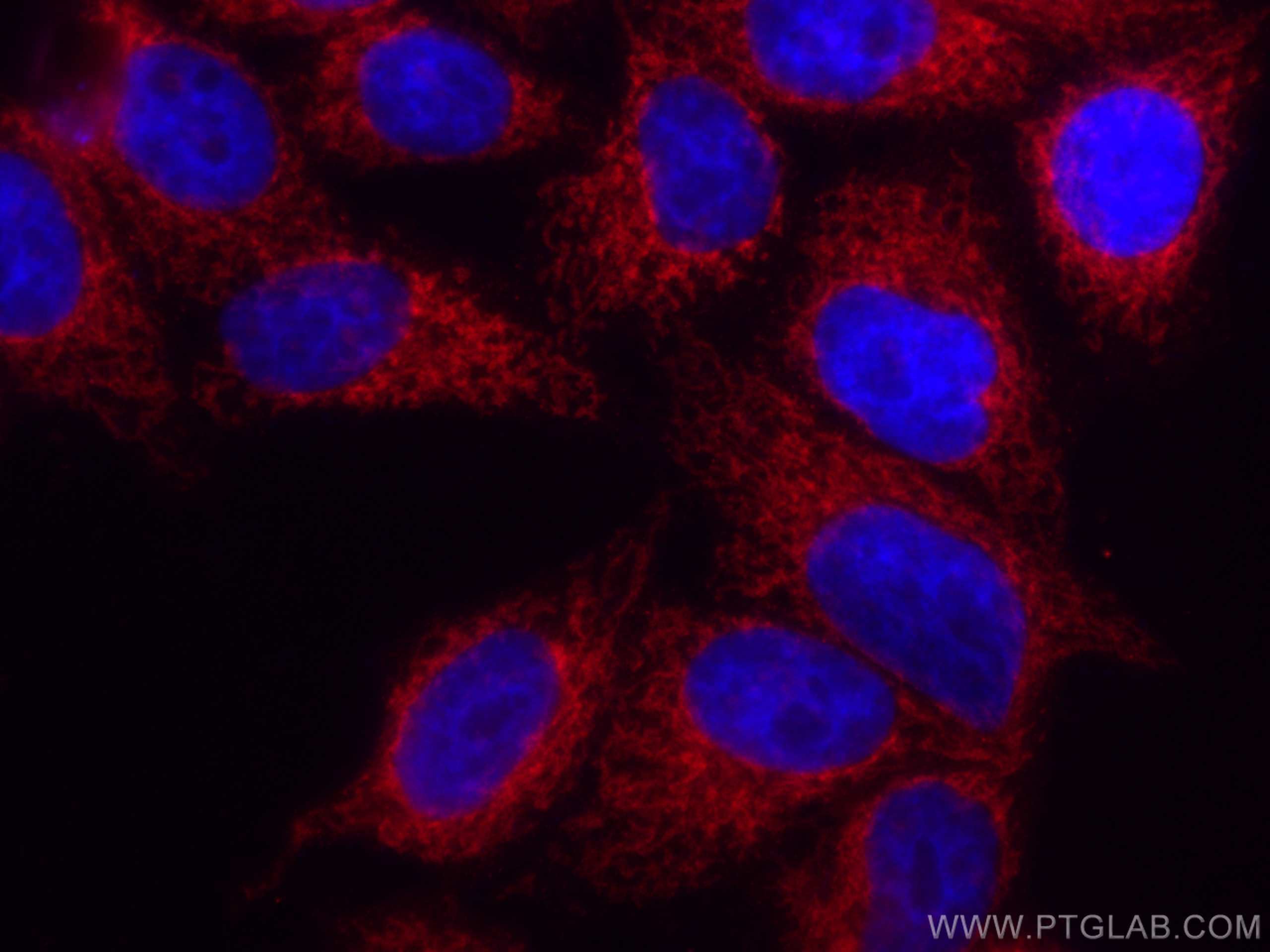FIS1 Monoklonaler Antikörper
FIS1 Monoklonal Antikörper für IF
Wirt / Isotyp
Maus / IgG1
Getestete Reaktivität
human
Anwendung
IF
Konjugation
CoraLite®594 Fluorescent Dye
CloneNo.
2F10E1
Kat-Nr. : CL594-66635
Synonyme
Galerie der Validierungsdaten
Geprüfte Anwendungen
| Erfolgreiche Detektion in IF | HepG2-Zellen |
Empfohlene Verdünnung
| Anwendung | Verdünnung |
|---|---|
| Immunfluoreszenz (IF) | IF : 1:50-1:500 |
| It is recommended that this reagent should be titrated in each testing system to obtain optimal results. | |
| Sample-dependent, check data in validation data gallery | |
Produktinformation
CL594-66635 bindet in IF FIS1 und zeigt Reaktivität mit human
| Getestete Reaktivität | human |
| Wirt / Isotyp | Maus / IgG1 |
| Klonalität | Monoklonal |
| Typ | Antikörper |
| Immunogen | FIS1 fusion protein Ag1409 |
| Vollständiger Name | fission 1 (mitochondrial outer membrane) homolog (S. cerevisiae) |
| Berechnetes Molekulargewicht | 17 kDa |
| Beobachtetes Molekulargewicht | 15 kDa |
| GenBank-Zugangsnummer | BC009428 |
| Gene symbol | FIS1 |
| Gene ID (NCBI) | 51024 |
| Konjugation | CoraLite®594 Fluorescent Dye |
| Excitation/Emission maxima wavelengths | 588 nm / 604 nm |
| Form | Liquid |
| Reinigungsmethode | Protein-G-Reinigung |
| Lagerungspuffer | BS mit 50% Glyzerin, 0,05% Proclin300, 0,5% BSA, pH 7,3. |
| Lagerungsbedingungen | Bei -20°C lagern. Vor Licht schützen. Nach dem Versand ein Jahr stabil. Aliquotieren ist bei -20oC Lagerung nicht notwendig. 20ul Größen enthalten 0,1% BSA. |
Hintergrundinformationen
Fis1 (fission 1) is an integral mitochondrial outer membrane protein that participates in mitochondrial fission by interacting with dynamin-related protein 1 (Drp1). Excessive mitochondrial fission is associated with the pathology of a number of neurodegenerative or neurodevelopmental diseases. Increased expression of Fis1 has been found in Huntington's disease (HD)-affected brain, Alzheimer's disease (AD) patients, and autism spectrum disorder. (21257639, 21459773, 23333625)
Protokolle
| Produktspezifische Protokolle | |
|---|---|
| IF protocol for CL594 FIS1 antibody CL594-66635 | Protokoll herunterladen |
| Standard-Protokolle | |
|---|---|
| Klicken Sie hier, um unsere Standardprotokolle anzuzeigen |


